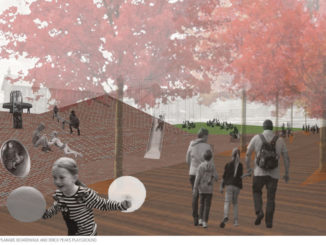“shifting grounds – rethinking the residential public spaces in singapore”. The project focused on enhancing social interaction within the community through landscape interventions in and around void decks in Singapore’s urban residential estates.
Singapore is densely populated, thus majority of its residents live in public residential estates where the landscape is typified by “void decks”. 90% Of Singapore’s population live in public housing, which in singapore is referred to as mass housing. This is in contrast to Melbourne, where only 10% of the population live in public housing.



“Void decks” is – a local term used to describe the permeable ground floor of apartment blocks. Although planned as part of the government’s initiative to promote social cohesion between the different demographics within singapore’s multiracial society, the concept has not met its intended success. My research intent was to enhance community spirit in the public realm through a mixture of permanent and temporal landscapes.

Majority of the current developments in the commercial district such as the integrated resorts similarly focused on retail activities. The city centre is geared towards the needs of international businesses such as hotels and shopping centres. These spaces are often paid more attention to than the spaces that people live in everyday. This project was about designing for the residents living in the community, encouraging new possibilities that make up for the essence of the void decks to remain and still allowing for existing social and cultural events to occur. I approached design through the difference in scales, introducing different options, excitement, innovation and events through a variation of permanent landscapes that set up the ground for temporal landscapes to occur.


In an attempt to enhance the ground plane and bring about social interaction; moving away from retail activities offered in the main central districts as well as town centres. There is no division of space such as inside (void deck) and outside(open spaces). Instead integrating these two spaces as one, results in a whole ground plane. It is important that the true essence of the spaces are not forgotten. Balancing the old and new is difficult but definitely essential.






Shifting Grounds
Student: Christina Ting
2011 Masters Of Landscape Architecture
Royal Melbourne Institute of Technology, Melbourne, Australia




